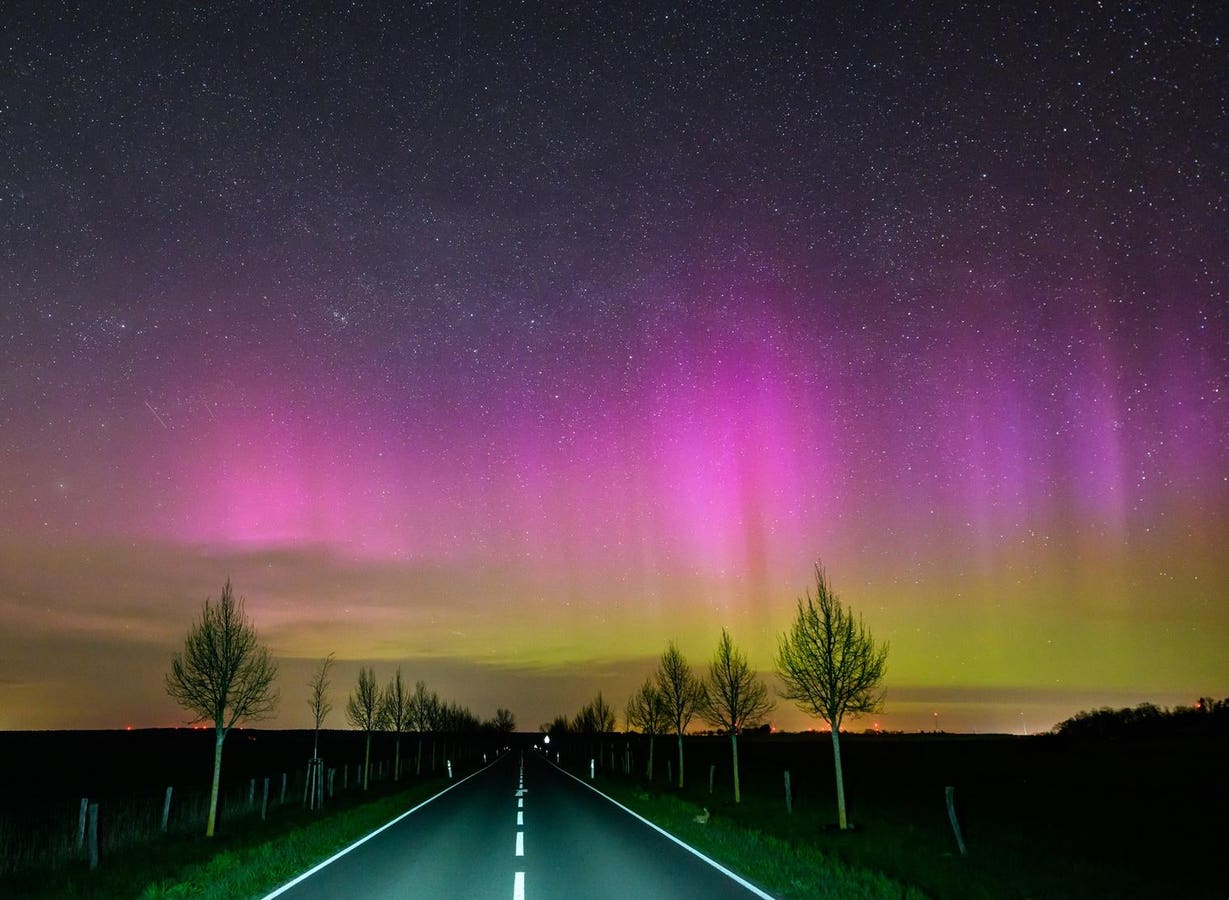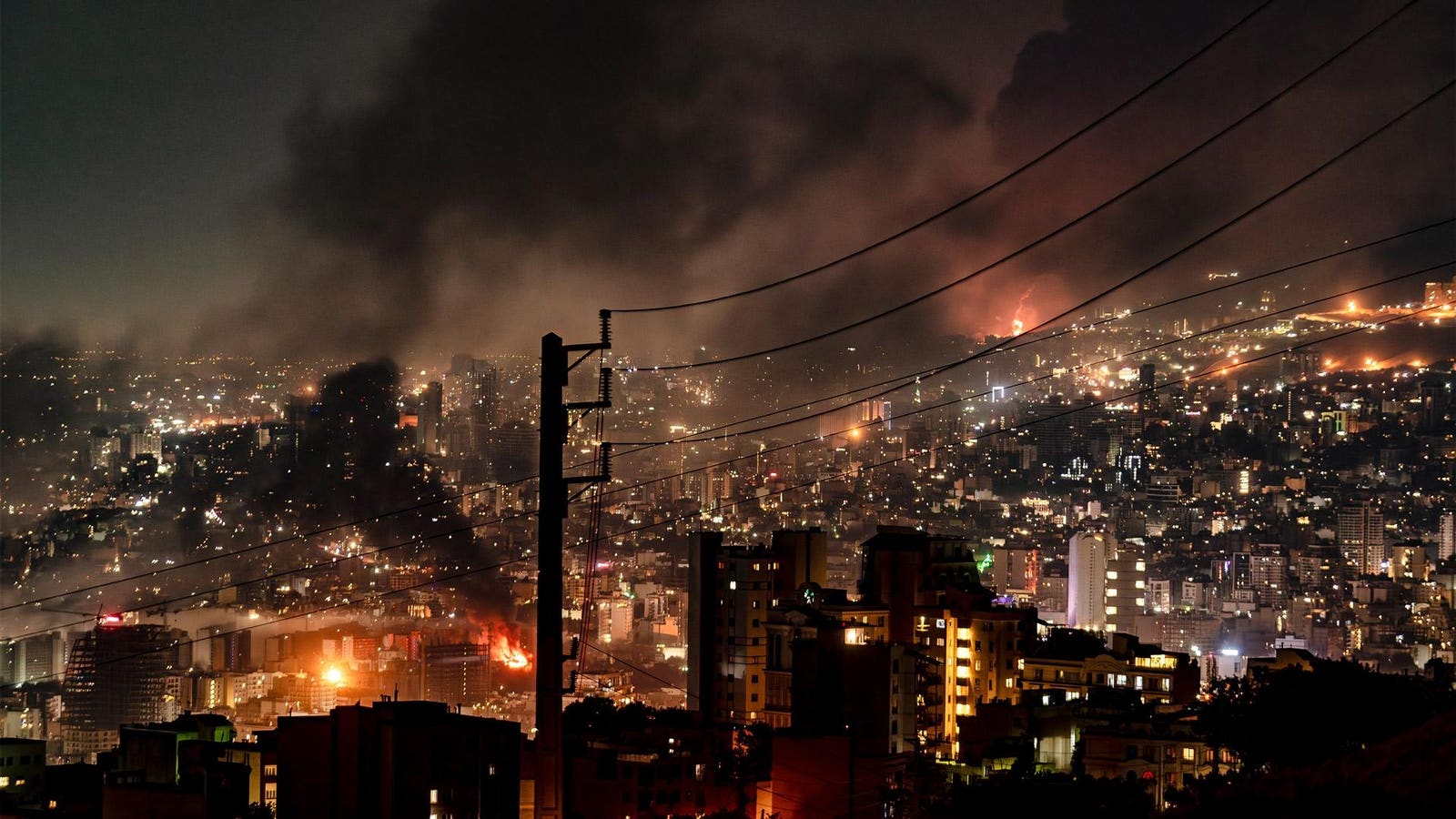Northern lights tonight? Aurora shine in the night sky above a road in the district of … More
The Northern Lights may be visible in the U.S. on Tuesday and Wednesday this week. According to the National Oceanic and Atmospheric Administration’s Space Weather Prediction Center, aurora could be visible during a G2-rated geomagnetic storm. It comes the day after the peak of a major meteor shower.
Northern Lights Forecast: Where To See Aurora In The U.S. This Week
The latest forecast is for a geomagnetic storm this week, with a “moderate” G2 geomagnetic storm striking on Tuesday, April 22 and Wednesday, April 23, with aurora displays possible in northern U.S. states — from Maine to Washington — as well as Canada and northern Europe.
U.S. states may see the aurora on the northern horizon, though Alaska and those on the U.S.-Canada border will have a higher chance.
The Kp index — which provides a rough guide to the intensity of aurora displays — may reach 5 or 6, which will see the auroral oval stretch farther south. Kp 5 or 6 equates to a G2-class geomagnetic storm. The geomagnetic storm on May 10, 2024, which saw aurora as far south as Florida, was rated a G5. It was the most powerful since 2003.
Northern Lights Forecast: When To See Aurora In The U.S. This Week
Predicting the arrival of the aurora is difficult. Data comes to space weather forecasters from NASA’s DSCOVR and ACE satellites, which orbit the sun about a million miles from Earth and give around a 30-minute warning of potential spikes in activity.
These satellites measure the solar wind’s speed and magnetic intensity, allowing forecasters to calculate how the solar wind will affect Earth’s magnetic field. Check NOAA’s 30-minute forecast and use the Glendale App for localized alerts.
Northern Lights Forecast: What’s Causing Aurora In The U.S. This Week
The Northern Lights are caused by the solar wind, a stream of charged particles from the sun interacting with Earth’s magnetic field. It intensifies during solar maximum, the peak of the sun’s 11-year solar cycle, which is thought to have occurred in October 2024.
According to Spaceweather.com, this week’s geomagnetic storm will be the result of a co-rotating interaction region — a transition zone in the solar wind that causes turbulence, a critical factor for displays of aurora.
Northern Lights Forecast: Moon Phase
For observers, the timing of this forecast couldn’t be better. According to Moon Giant, the moon reaches its last quarter phase on Monday, April 21, meaning it will rise after midnight as a 35%-lit crescent in the early hours of Wednesday, April 23. That means the evening of Tuesday, April 22, will be as dark as possible — though whether there are clear skies is a different matter.
Northern Lights Forecast: Dark Skies
The mon phase aside, aurora are far easier to see in dark country skies, with light pollution rendering them virtually invisible in all but the strongest displays. It’s best to be as far away from city lights as possible to maximize your chances of seeing the aurora, using a light pollution map and visiting a Dark Sky Place (a Dark-Sky Preserve in Canada). A dark northern horizon is the most important.
Northern Lights Forecast: Lyrid Meteor Shower Peaks
Aurora watchers on Tuesday evening could also see the tail-end of the peak of the Lyrids, one of the longest-running and most famous annual meteor showers.
The early hours of Tuesday, April 22, should be the best night to catch the Lyrids at their peak — when about 20 meteors per hour is possible — though its peak is relatively broad.
Wishing you clear skies and wide eyes.








